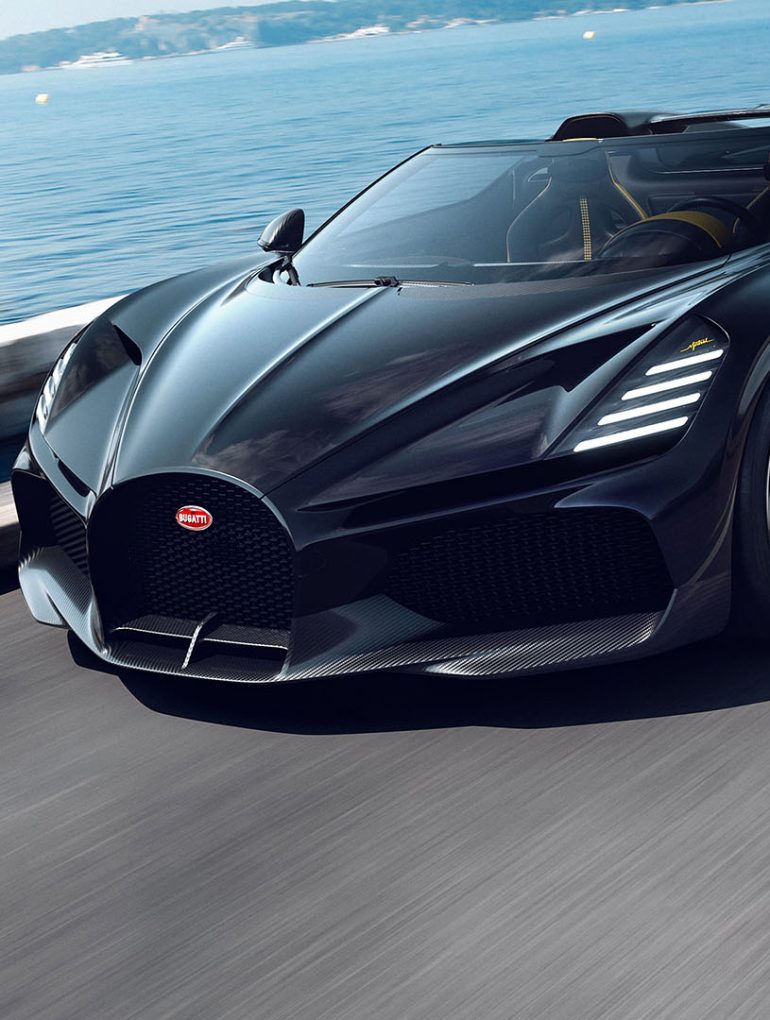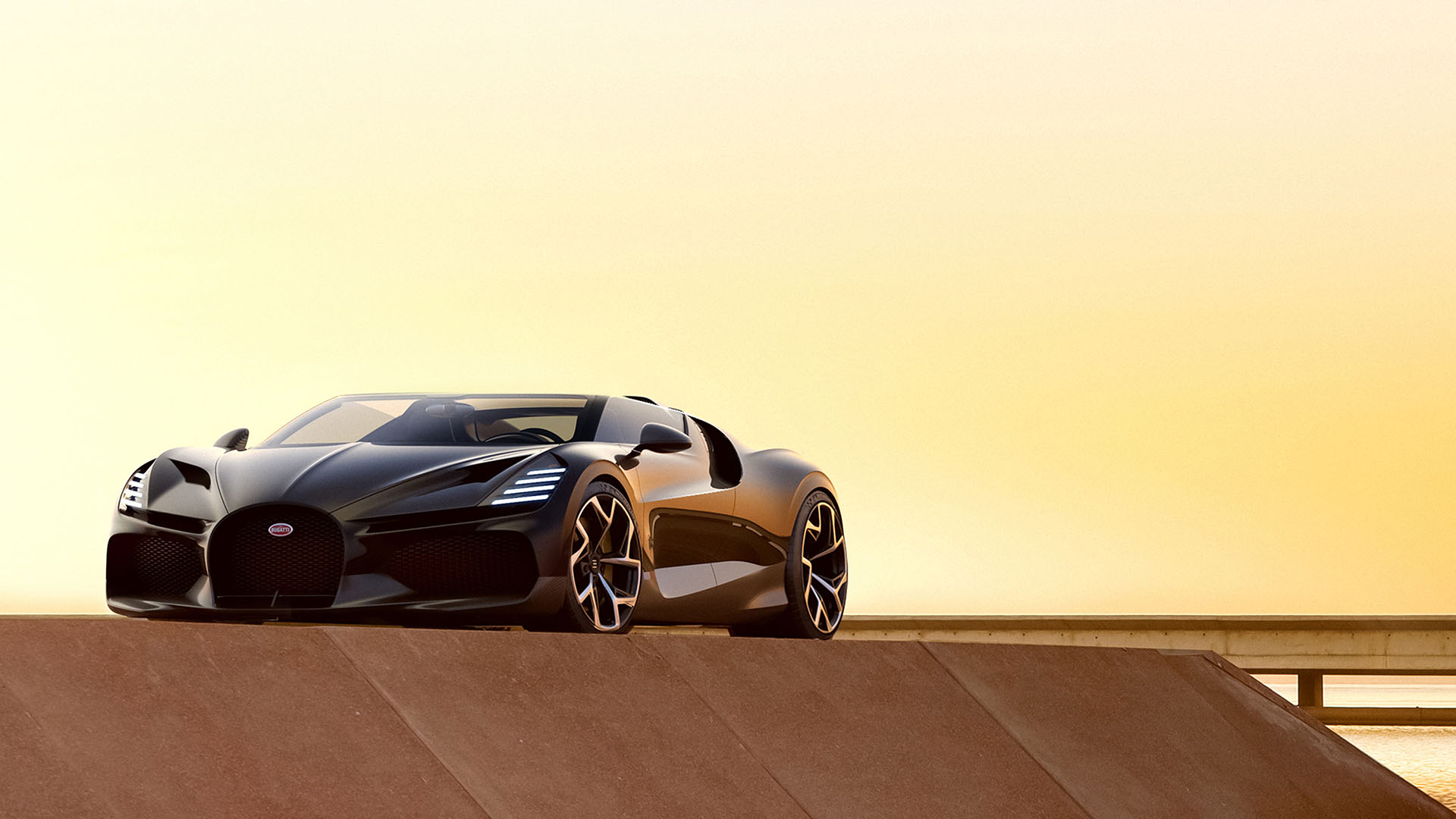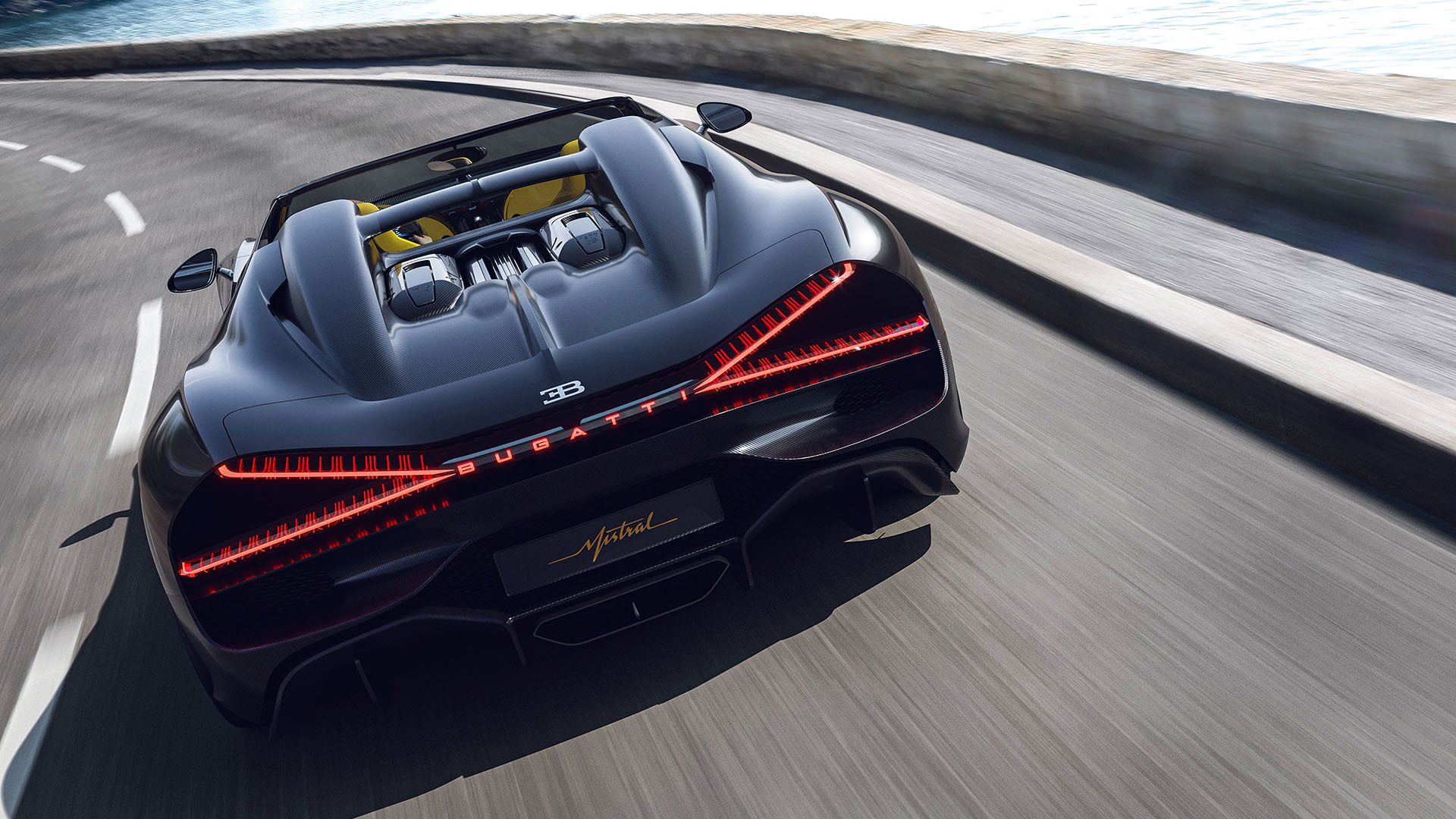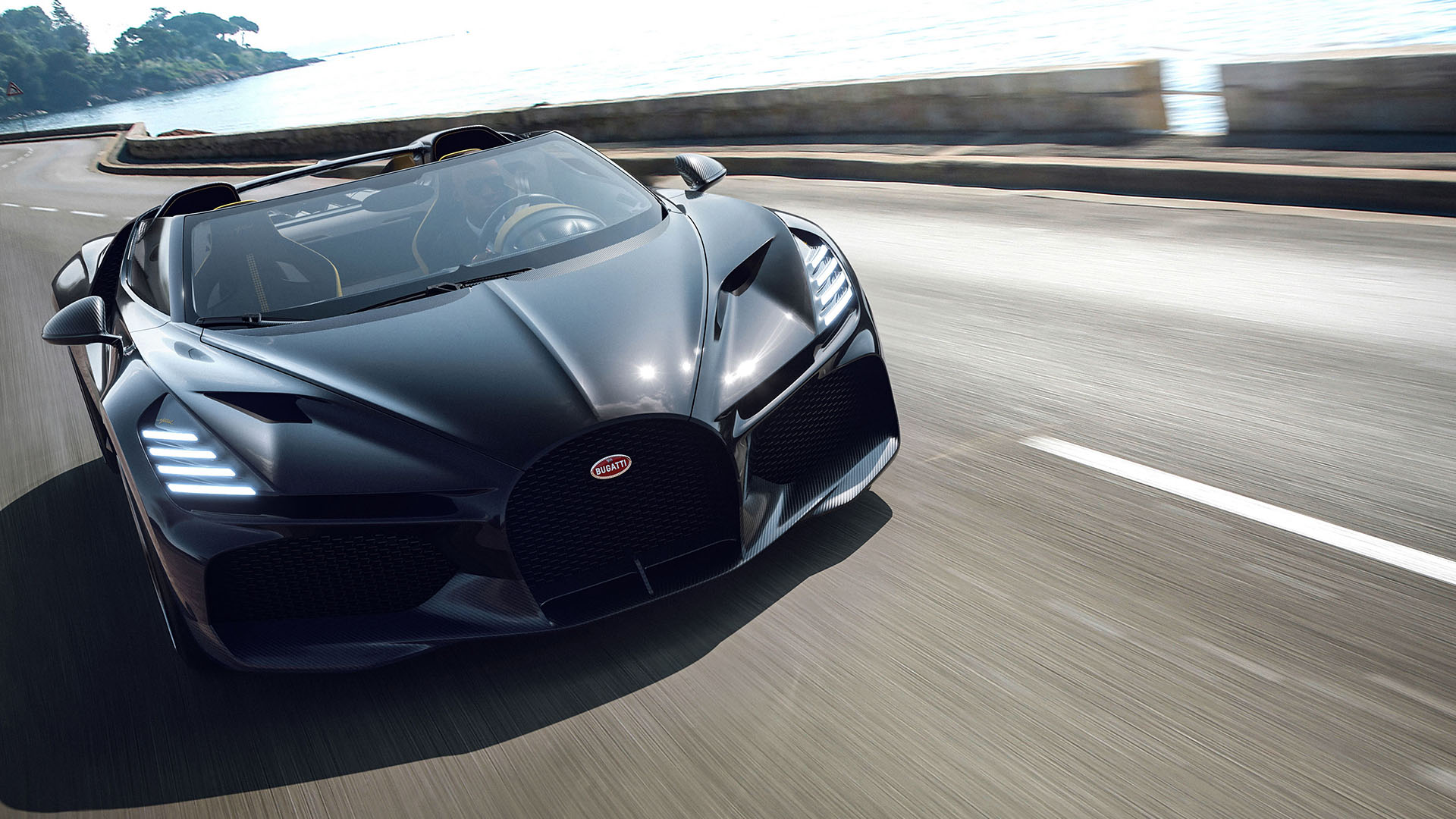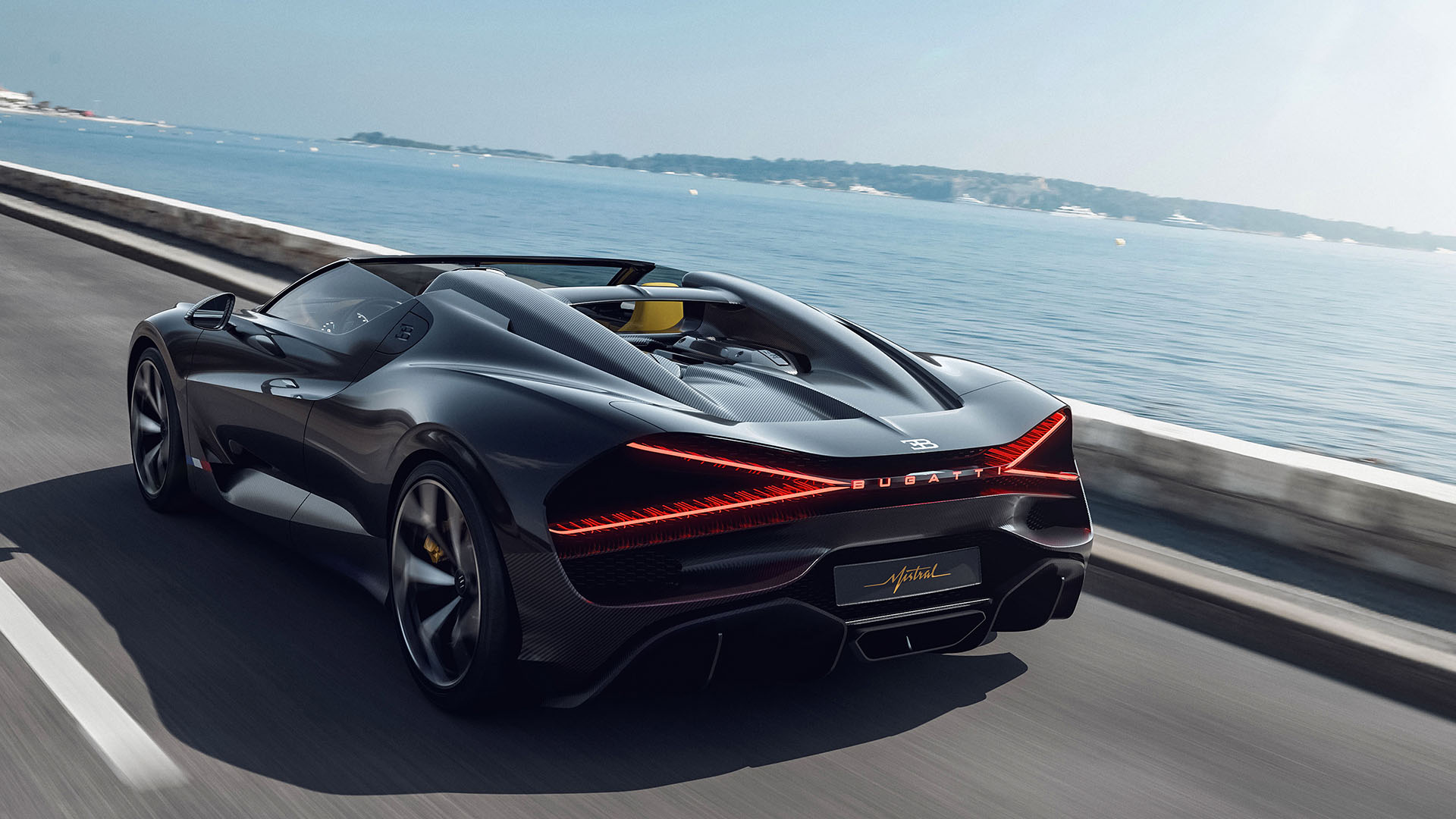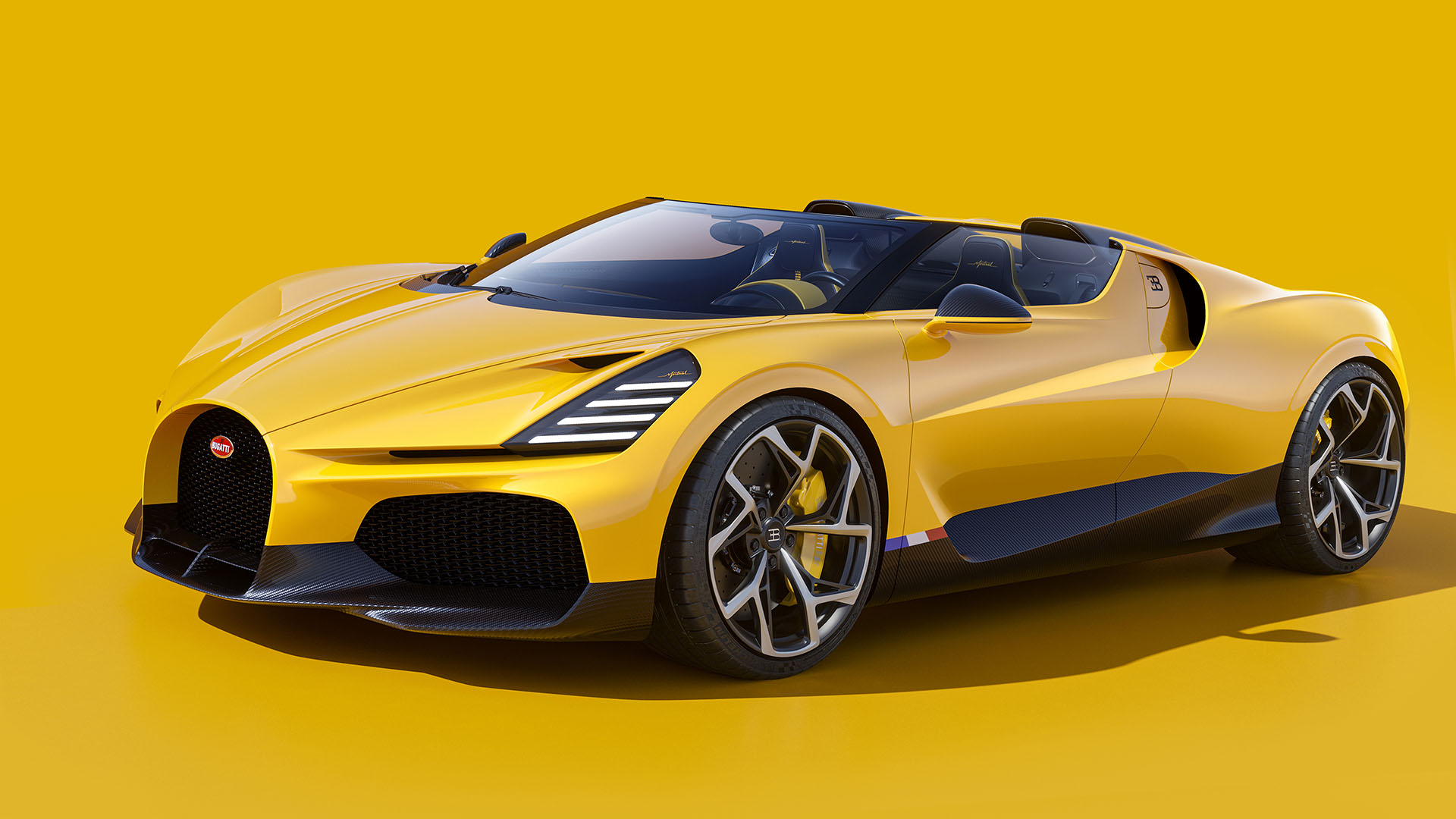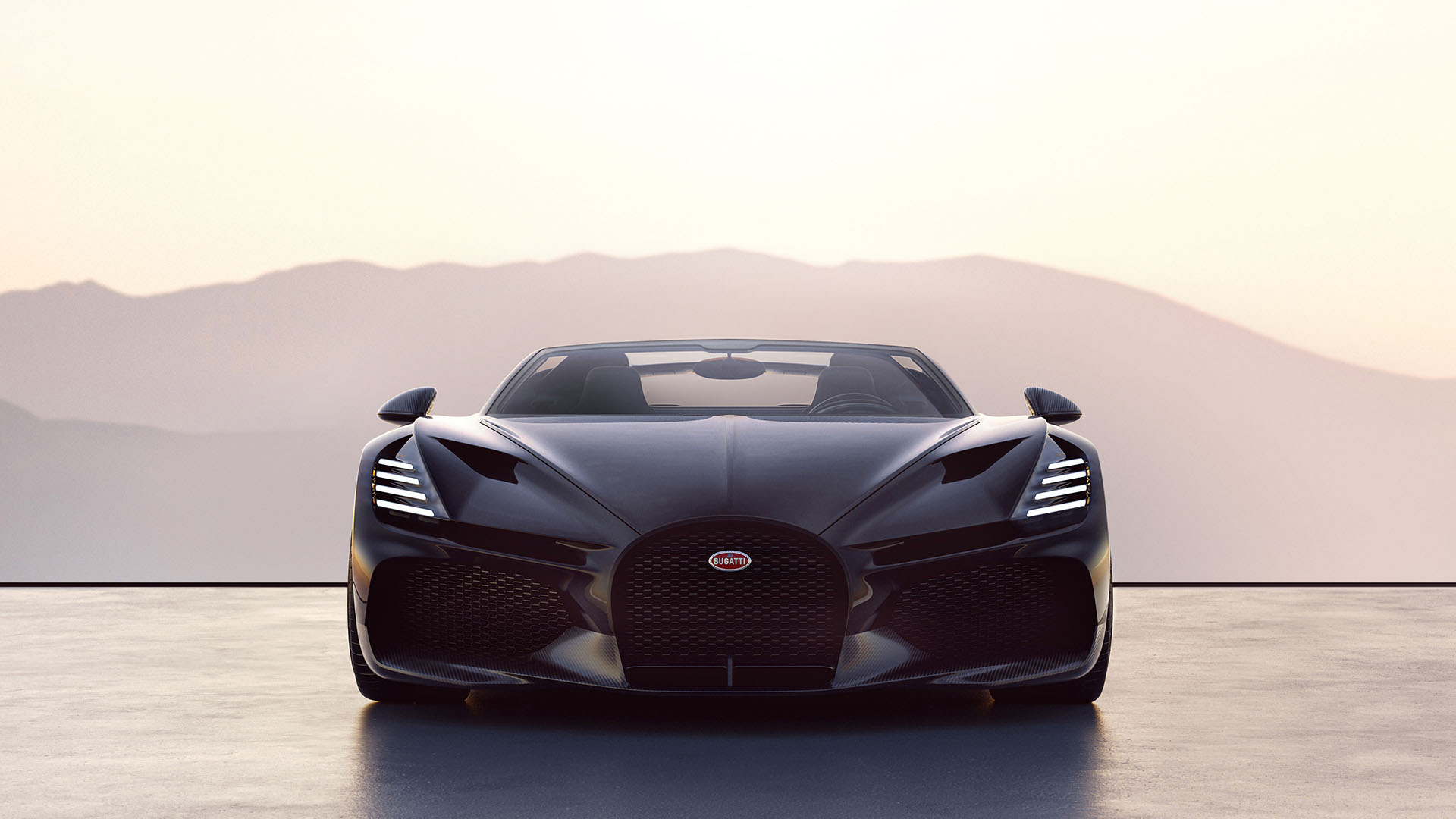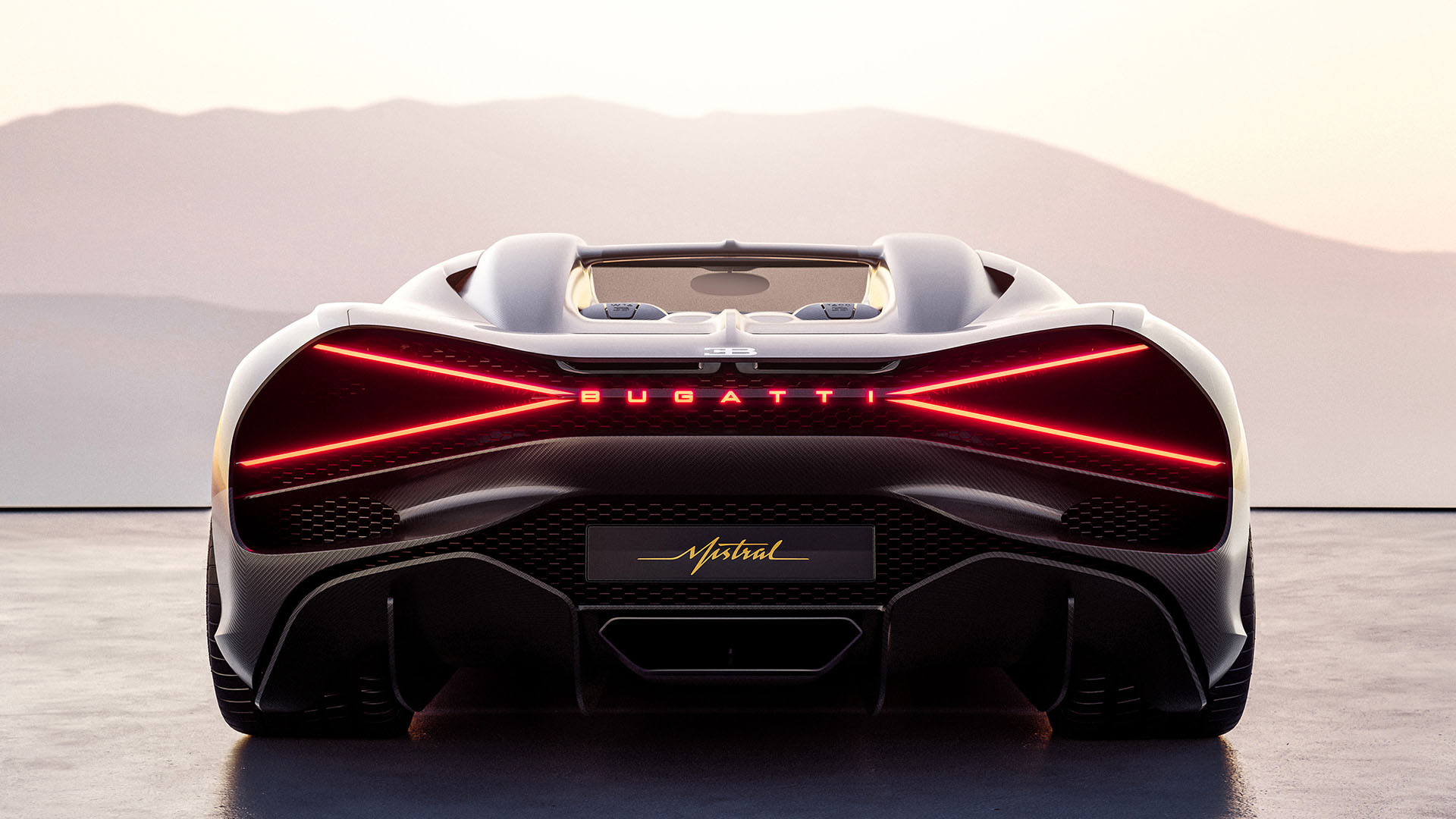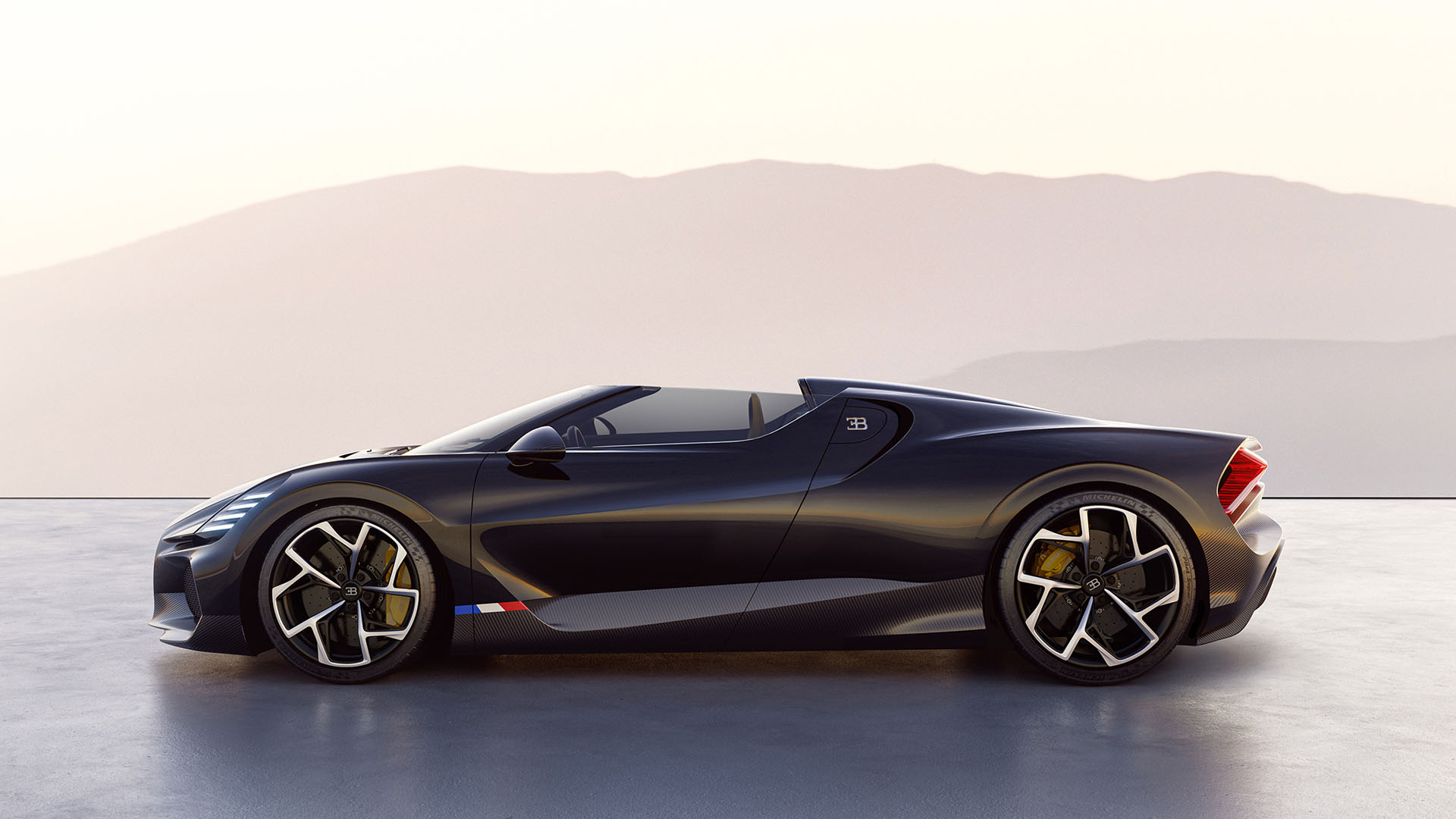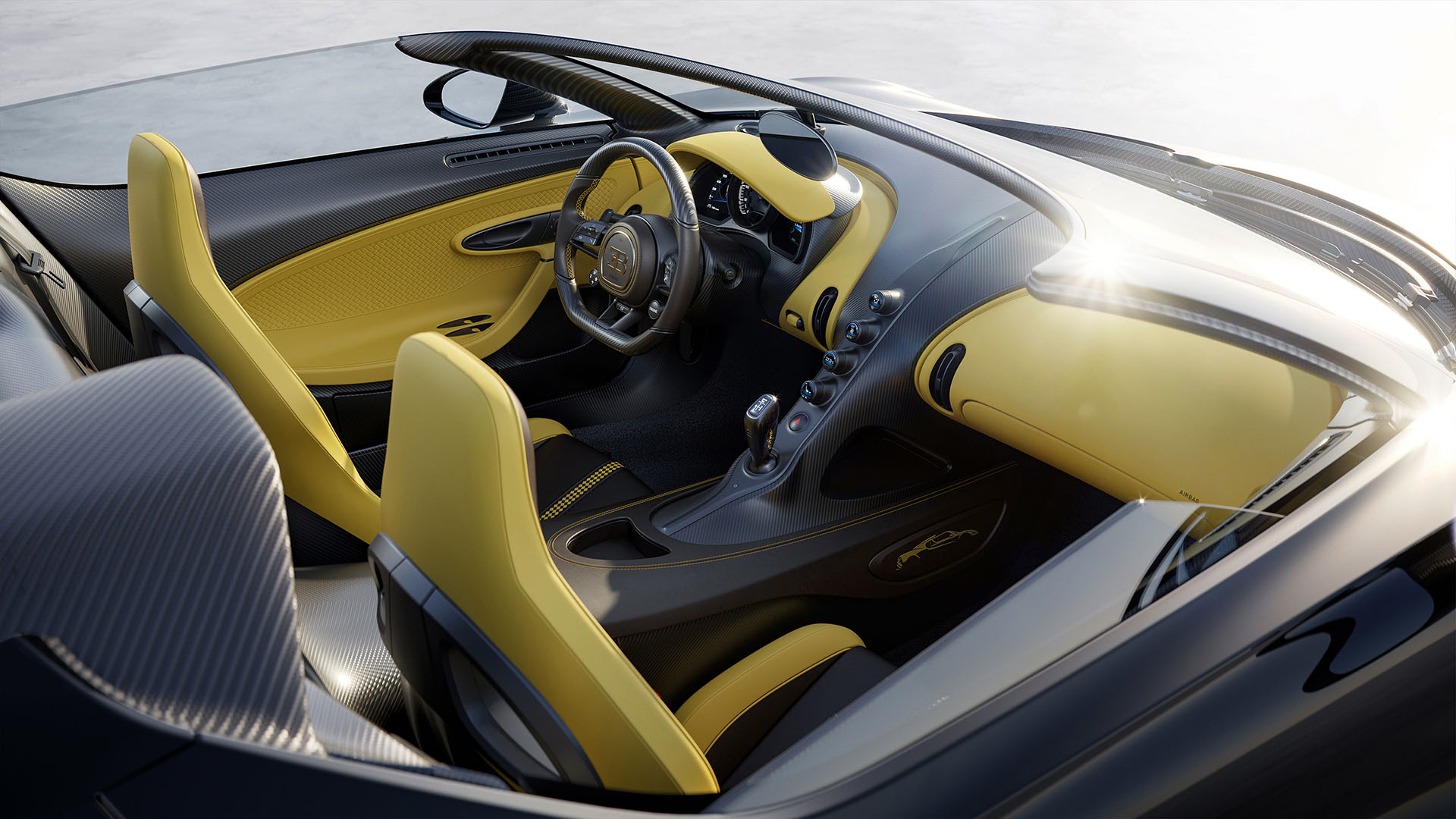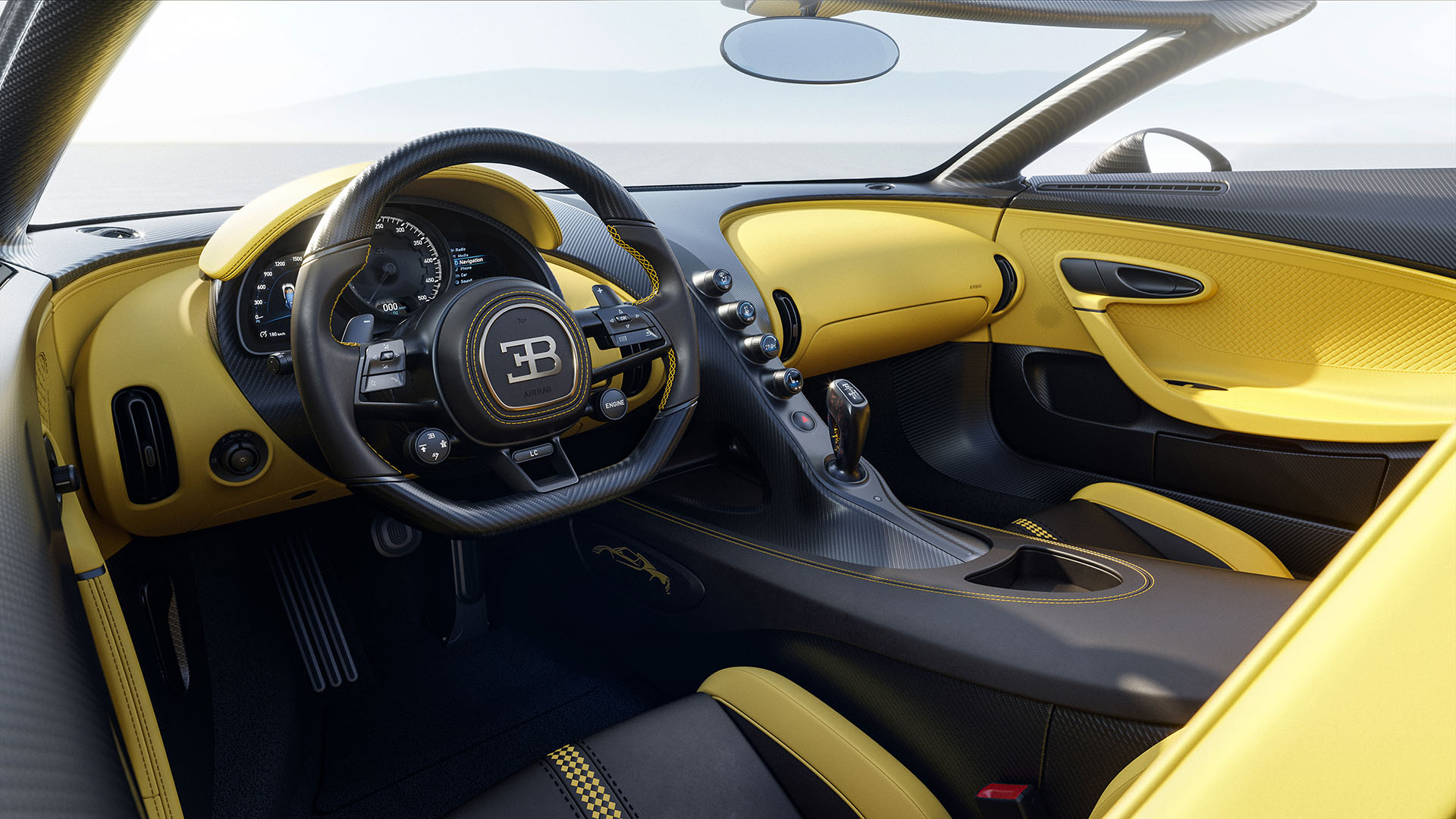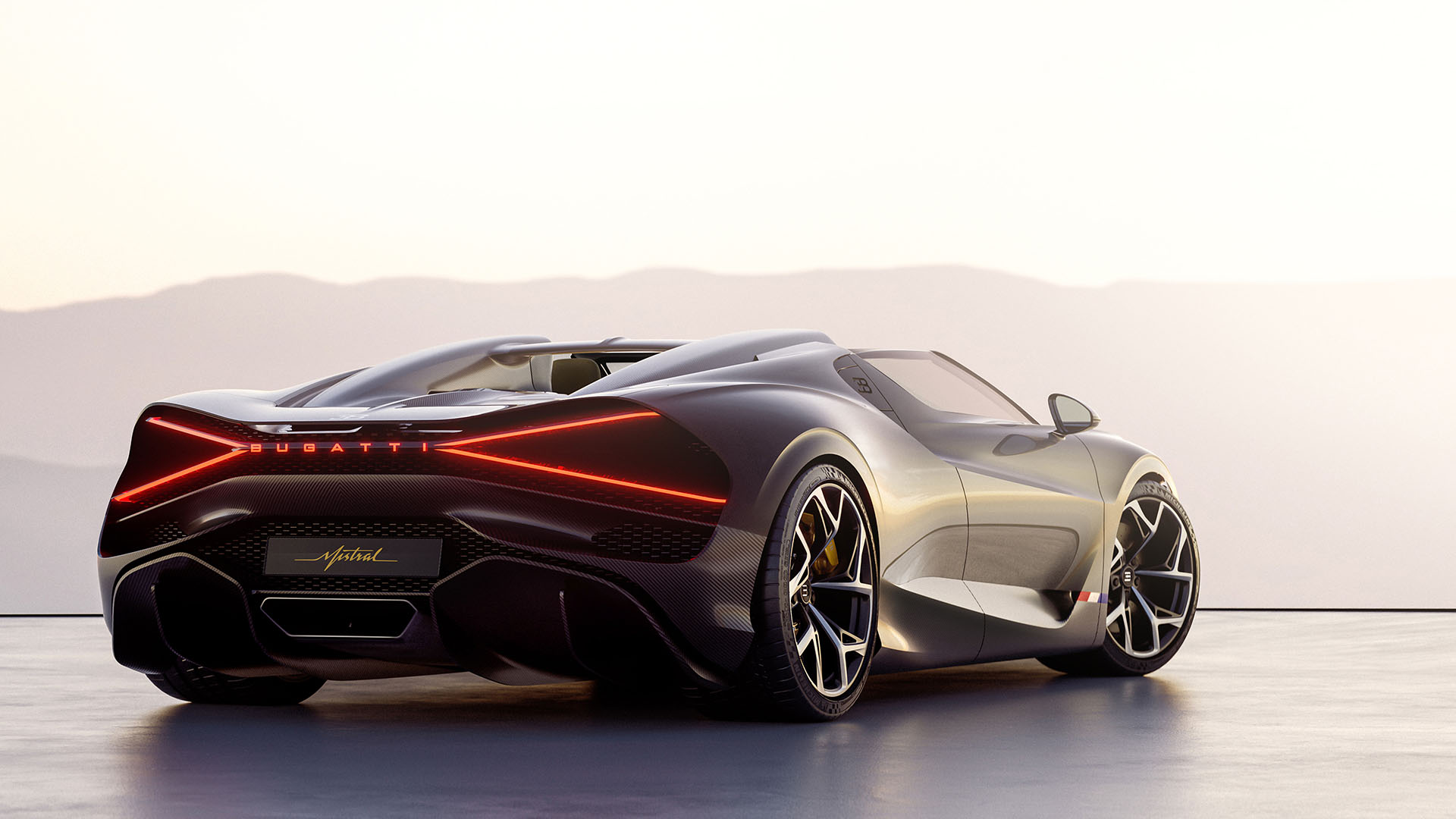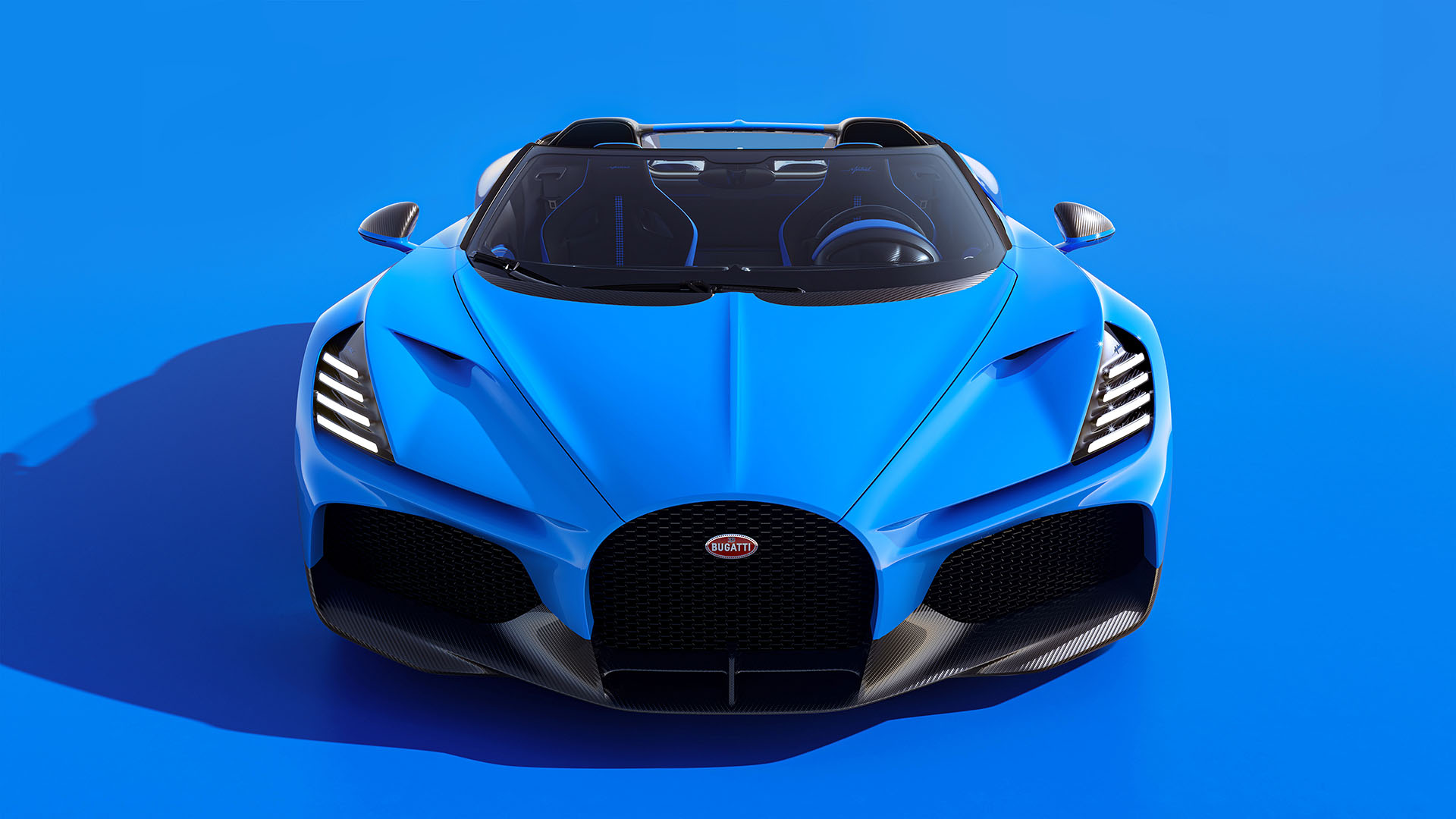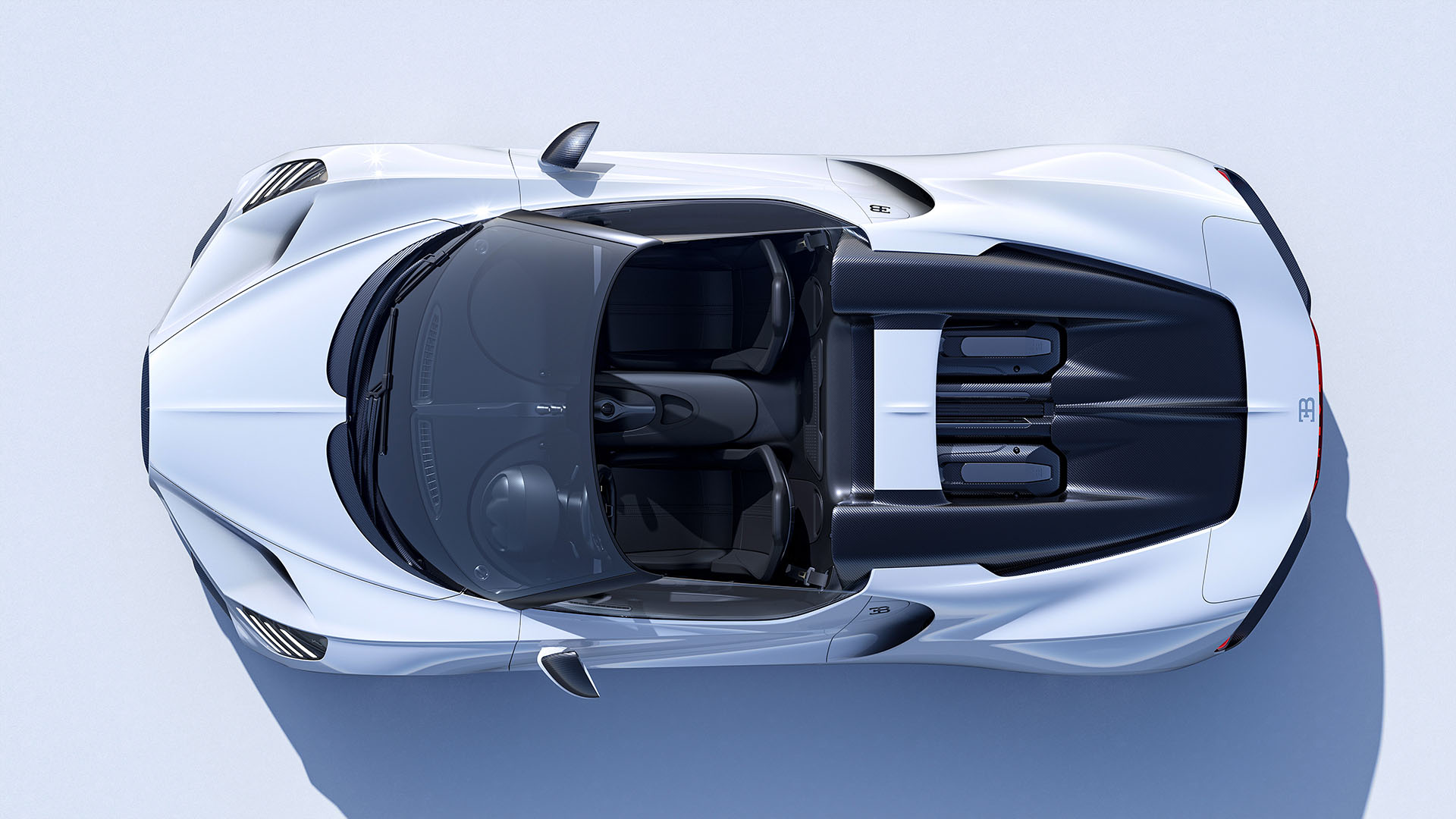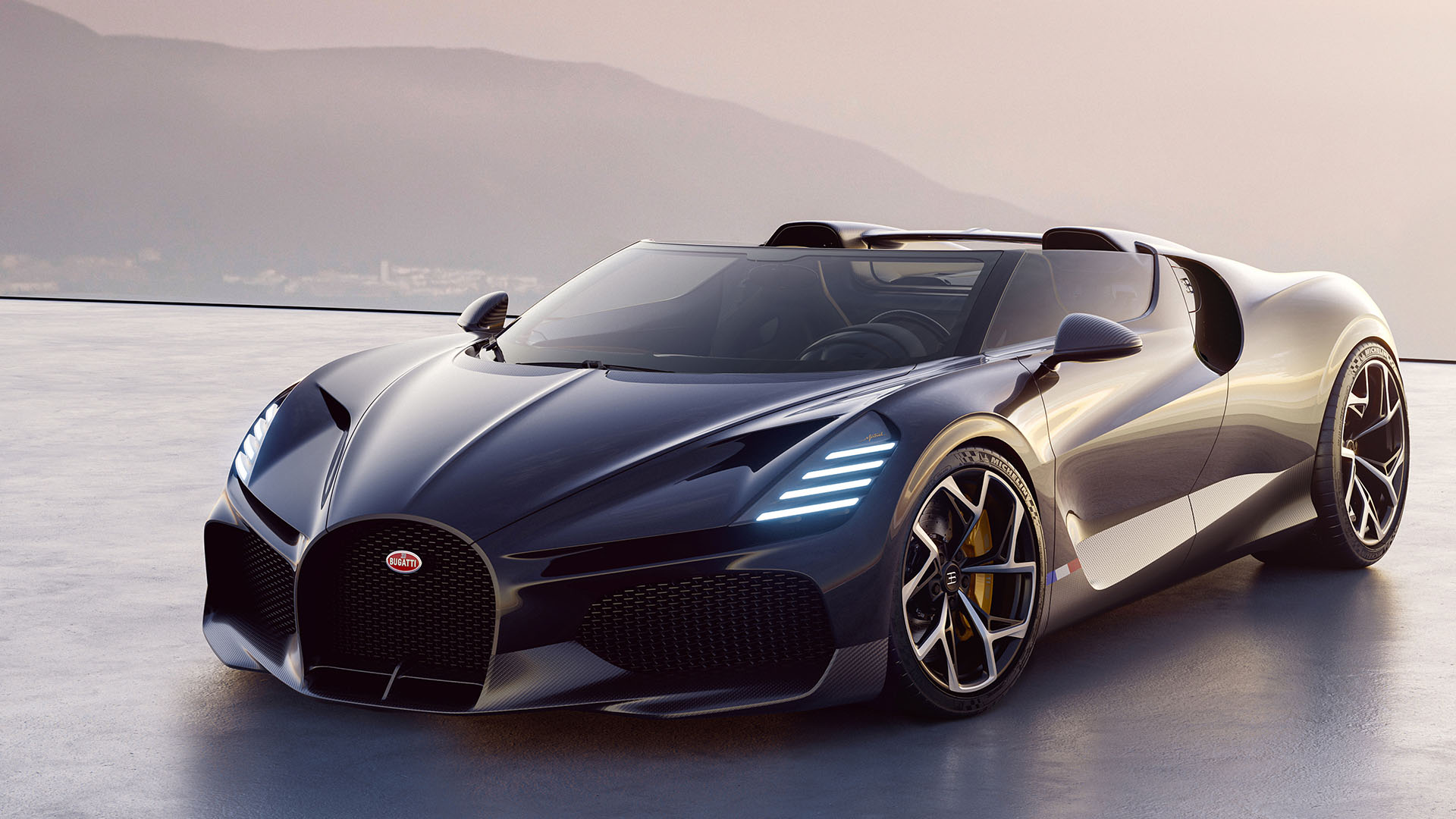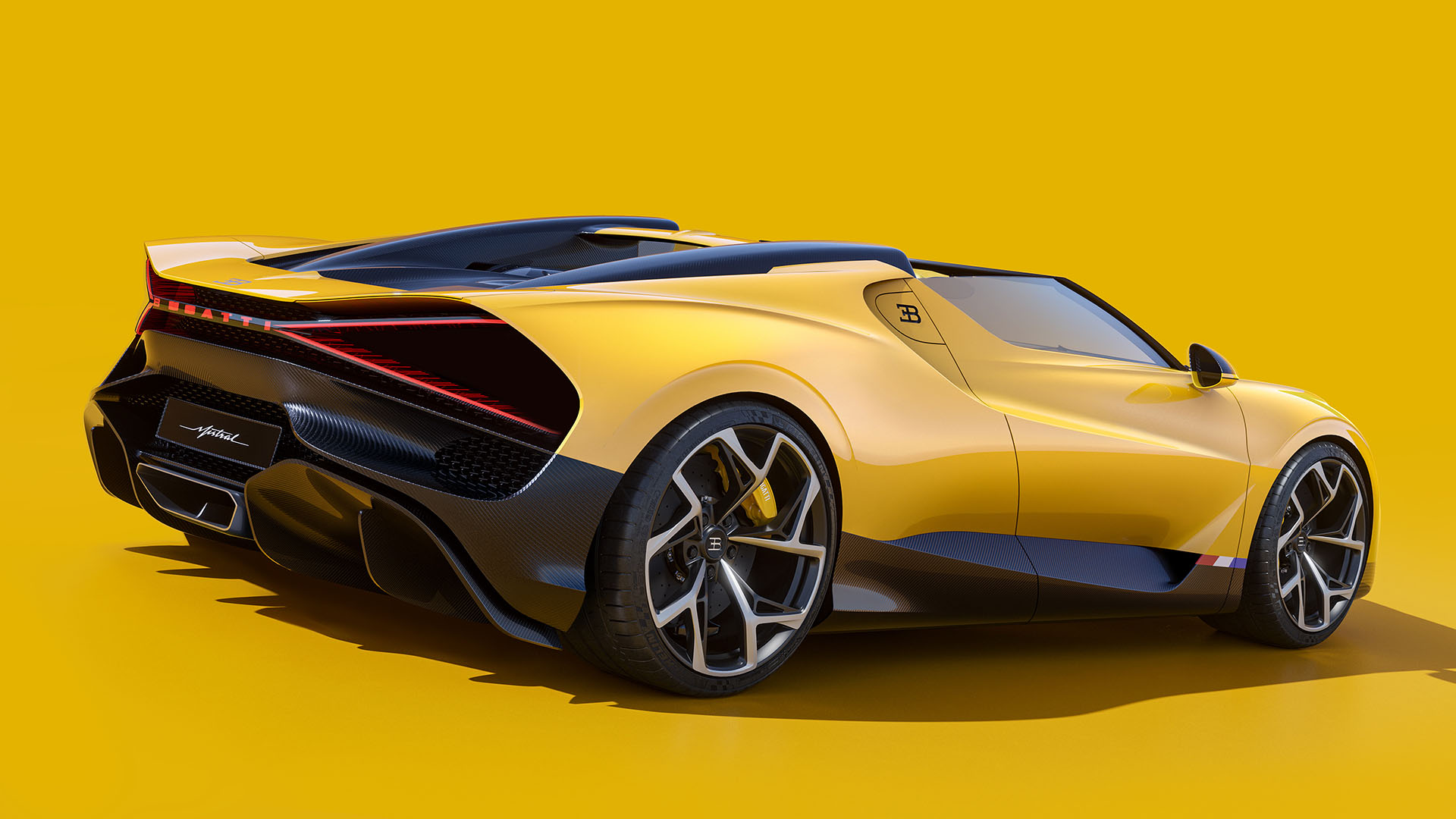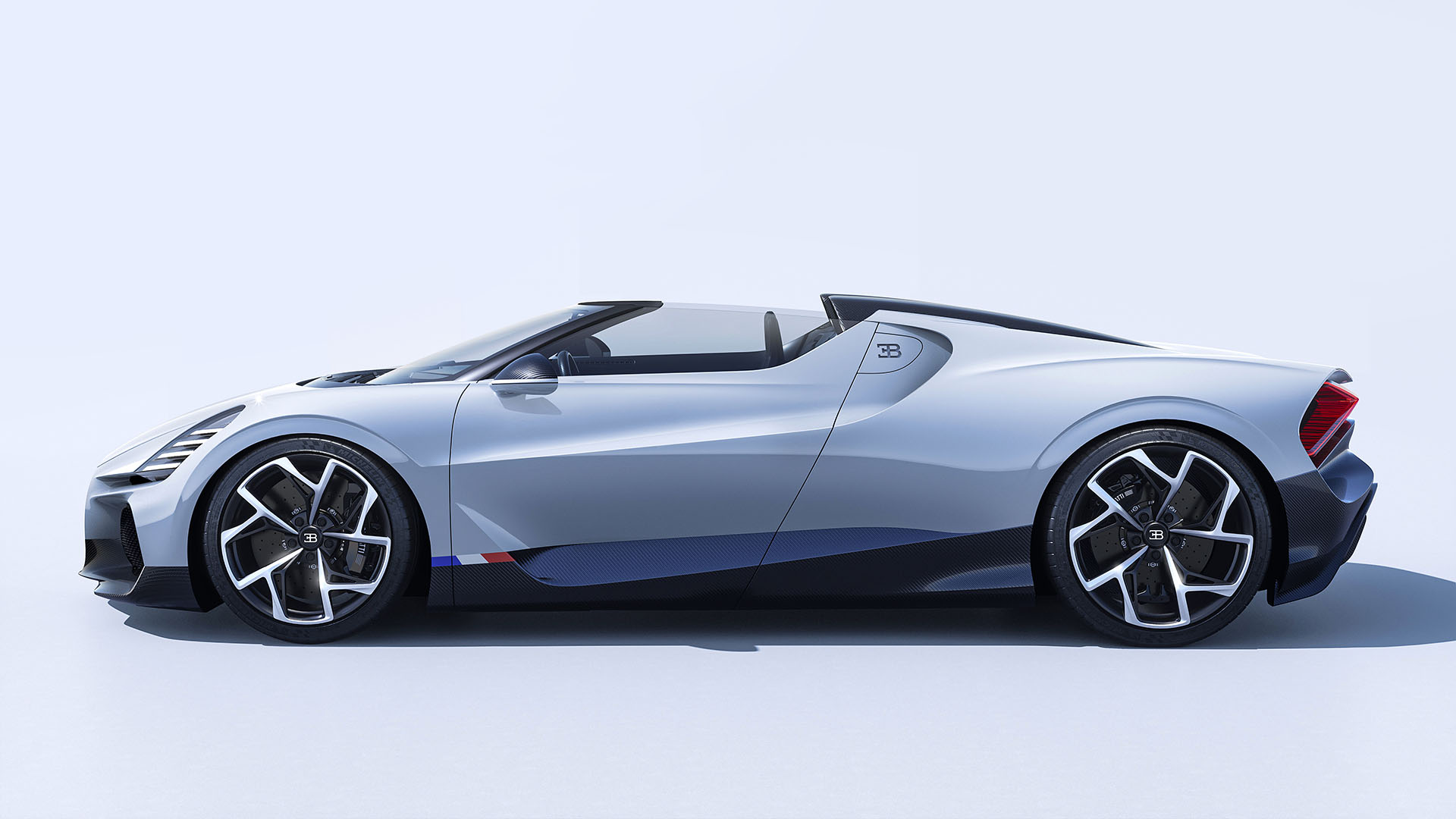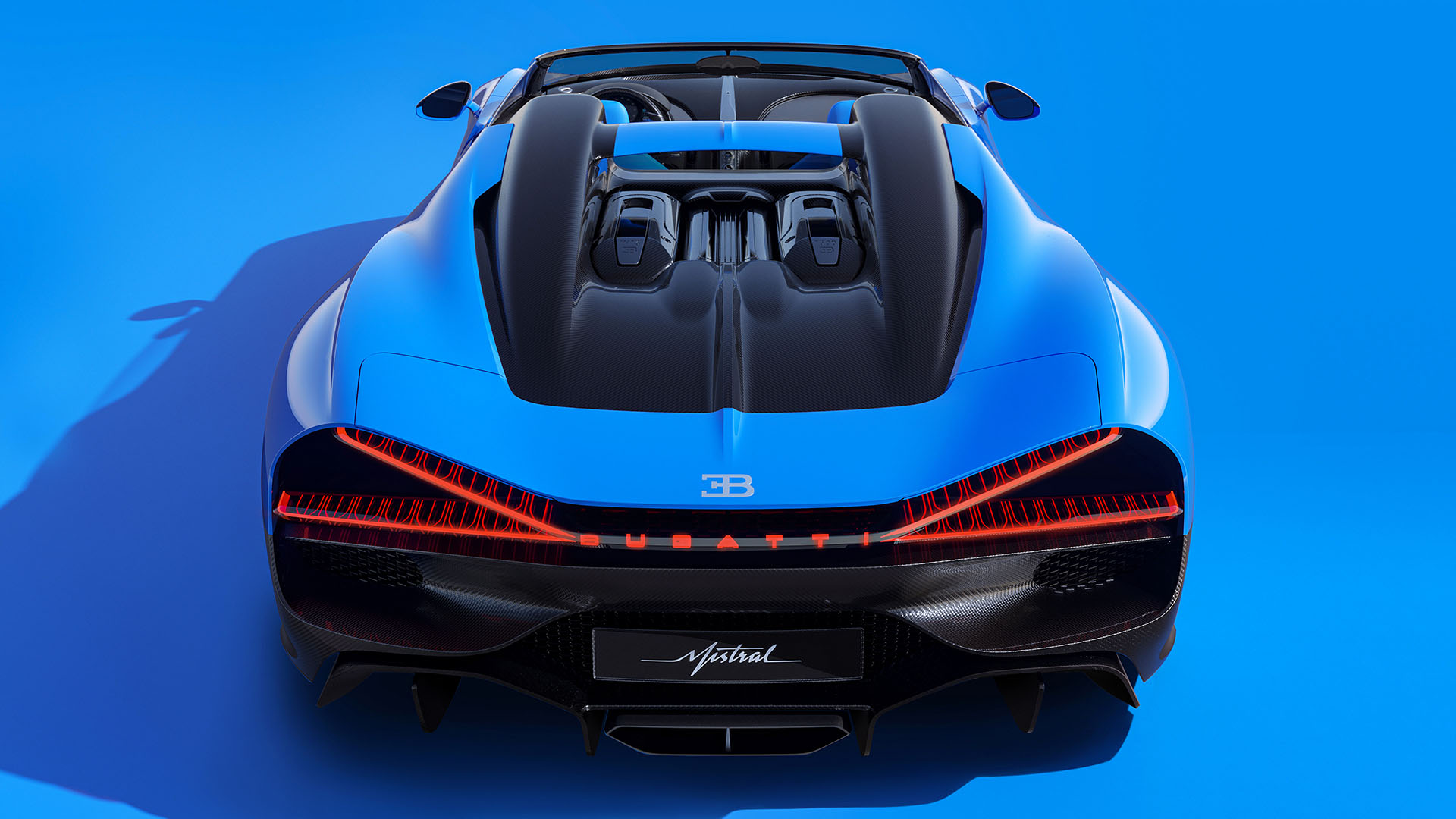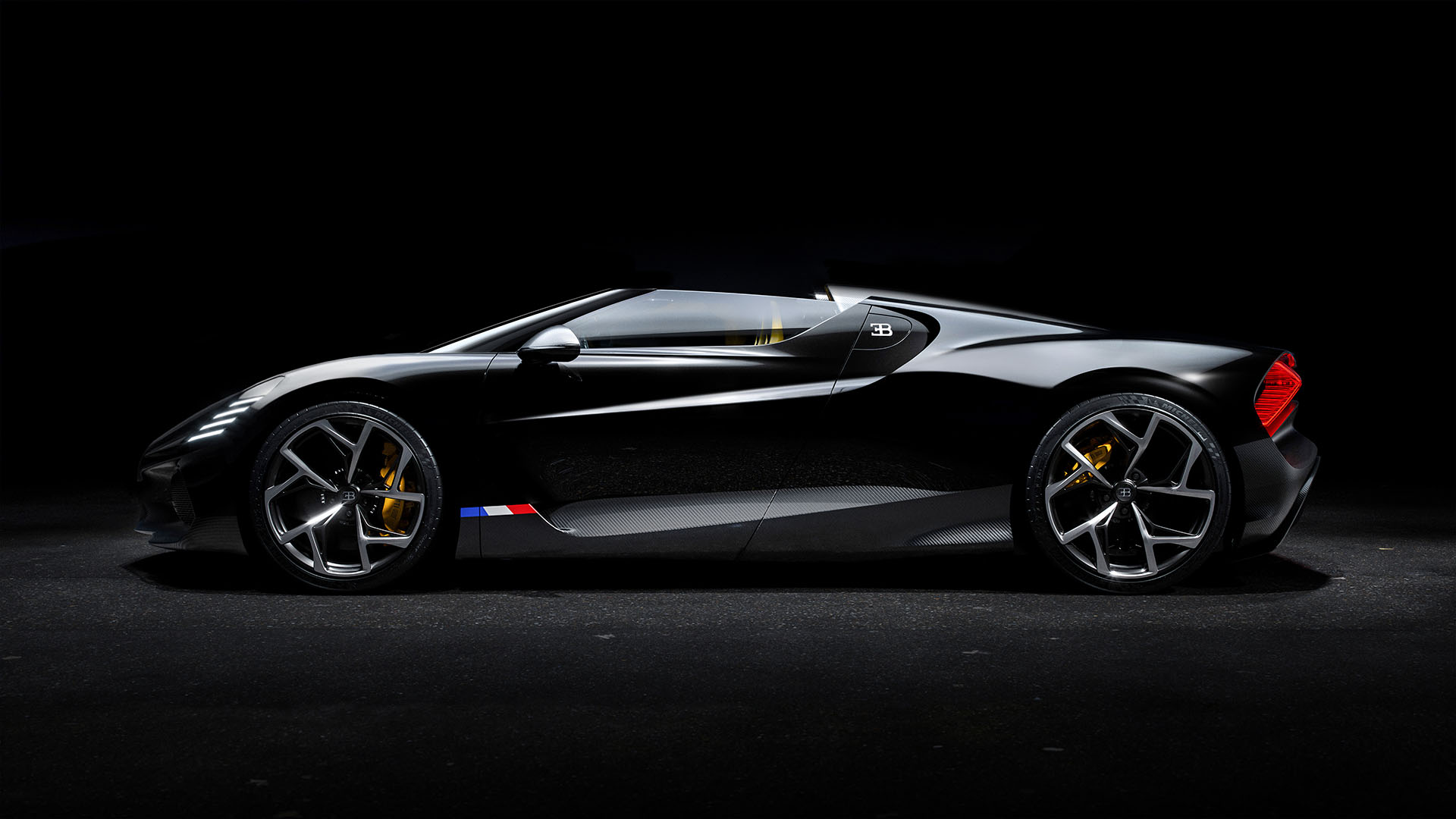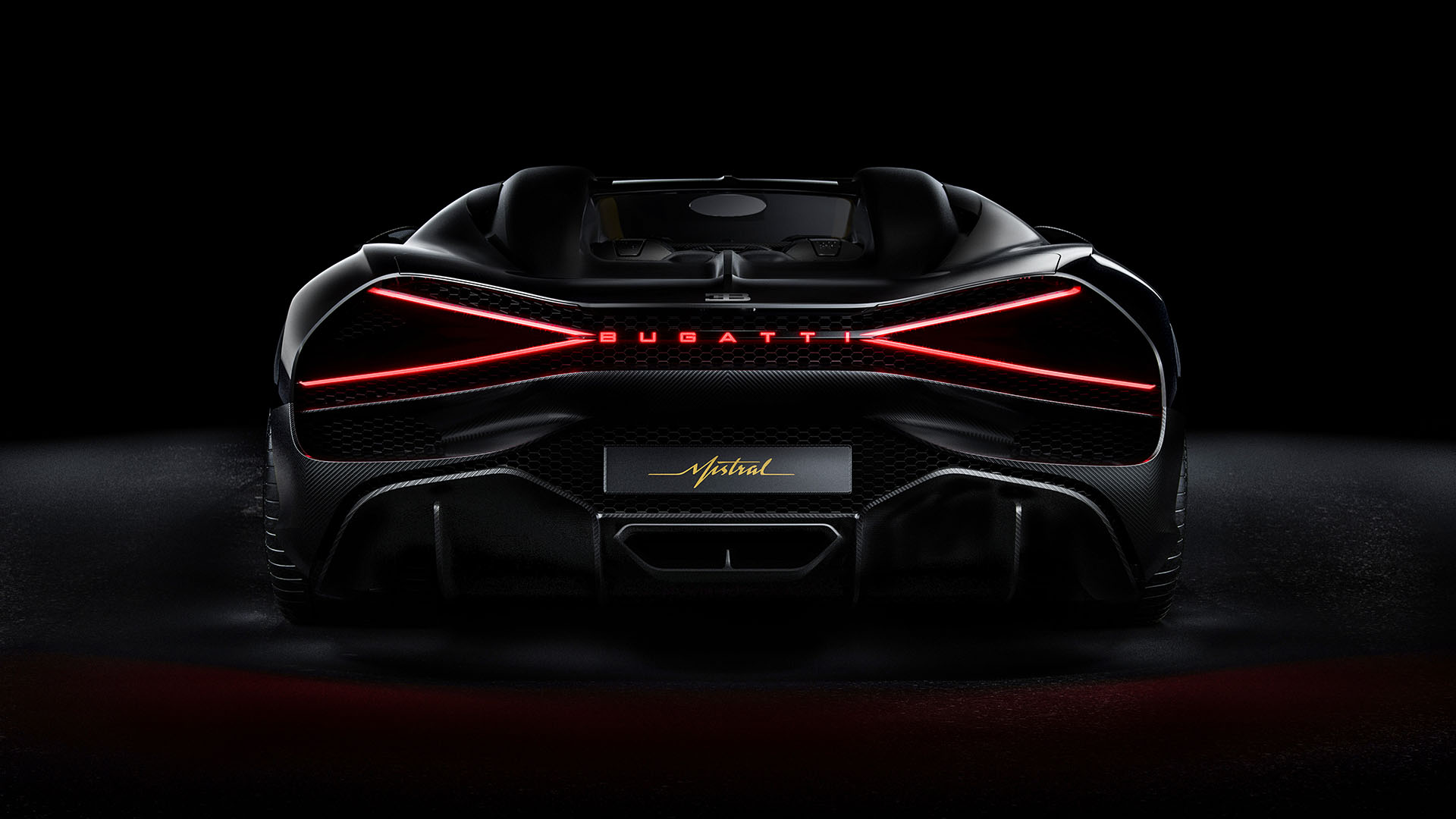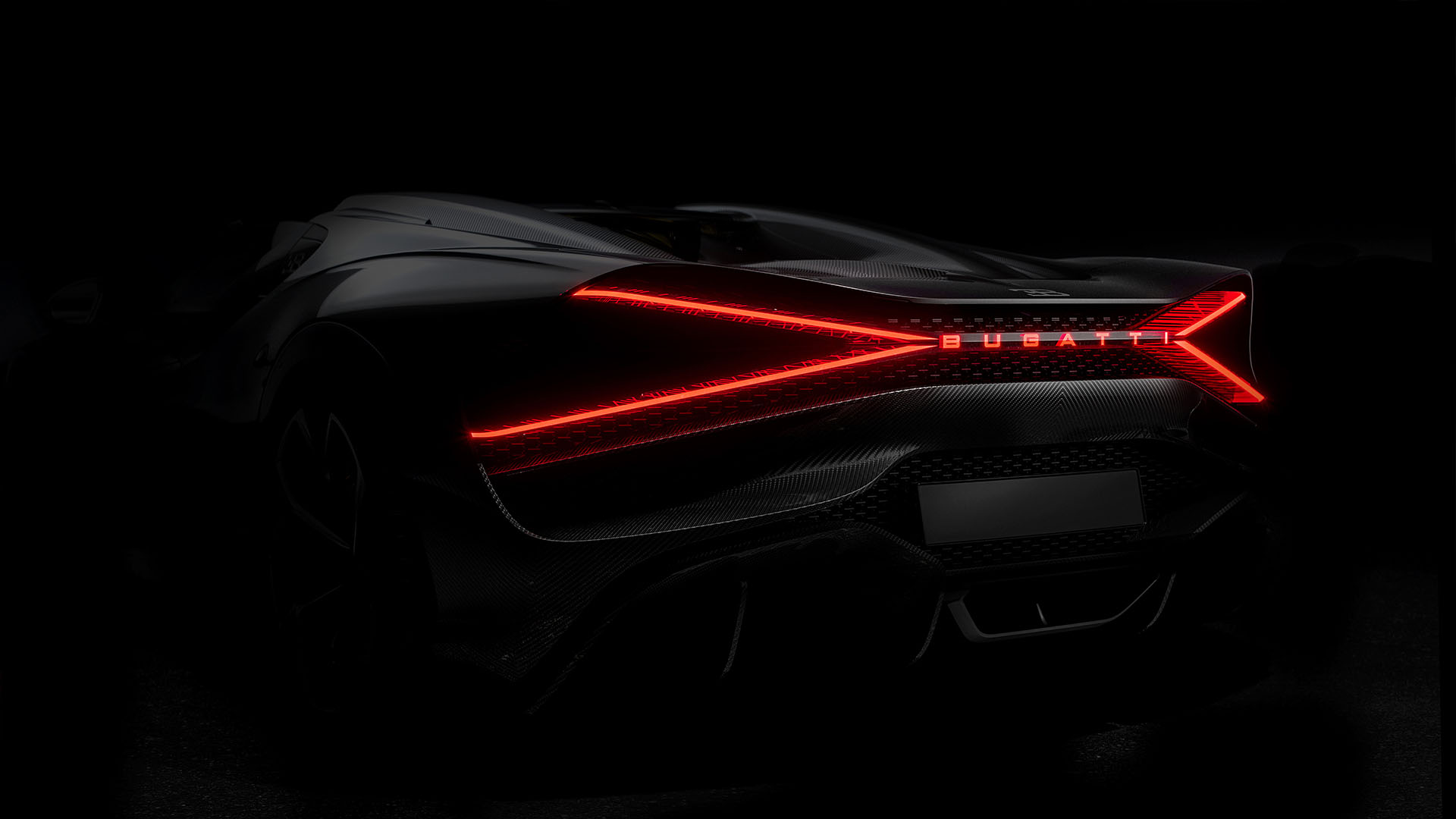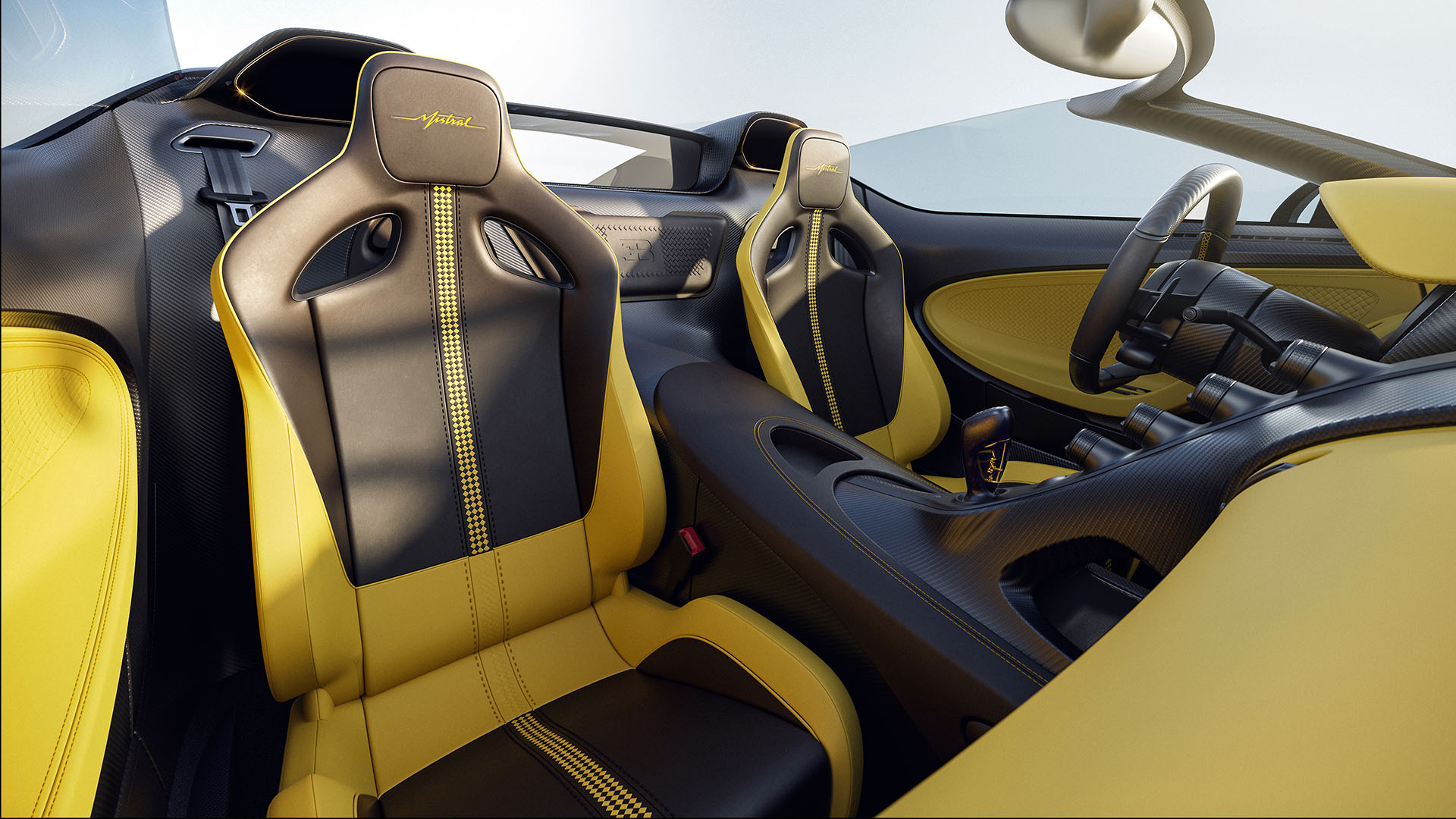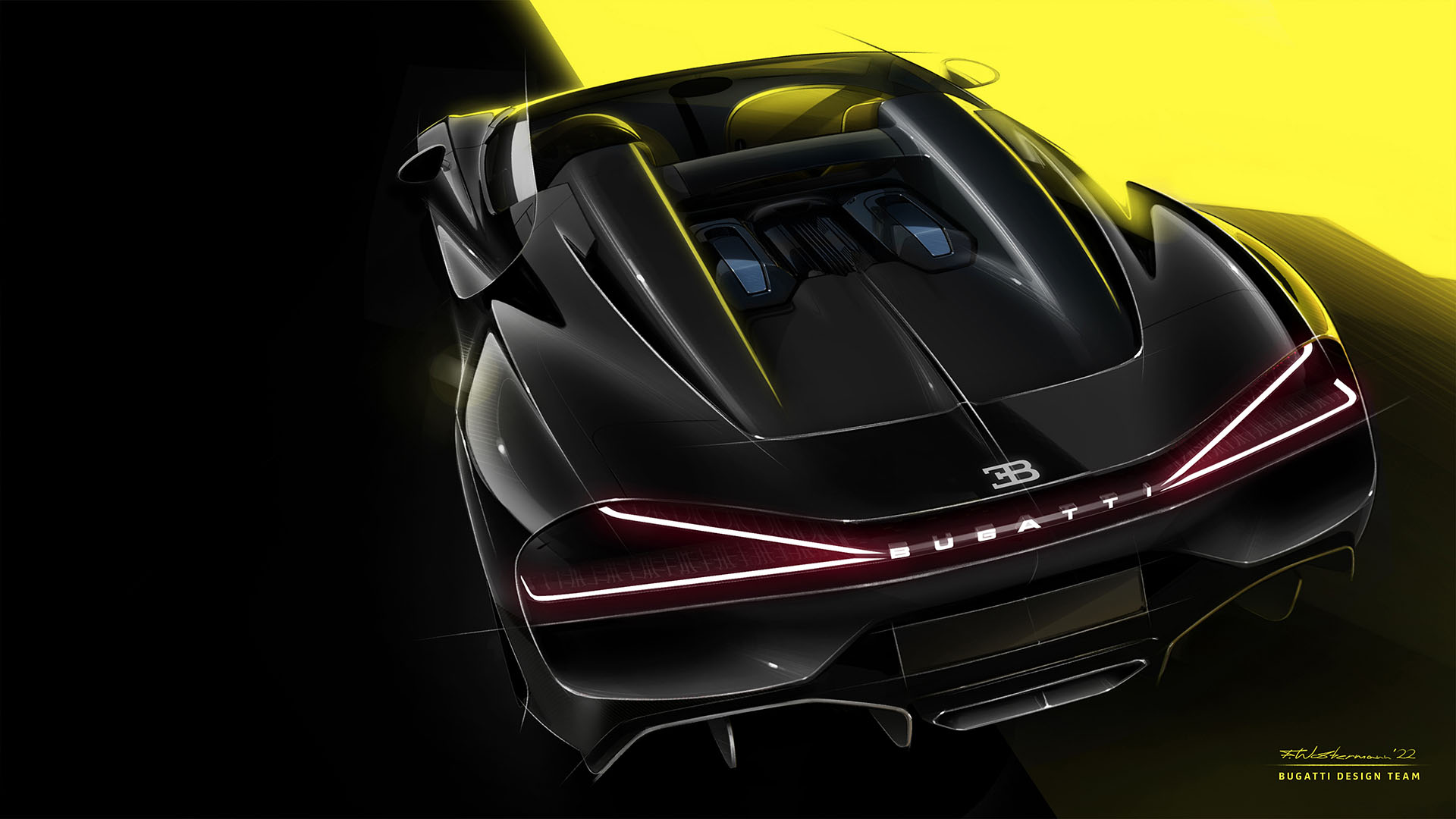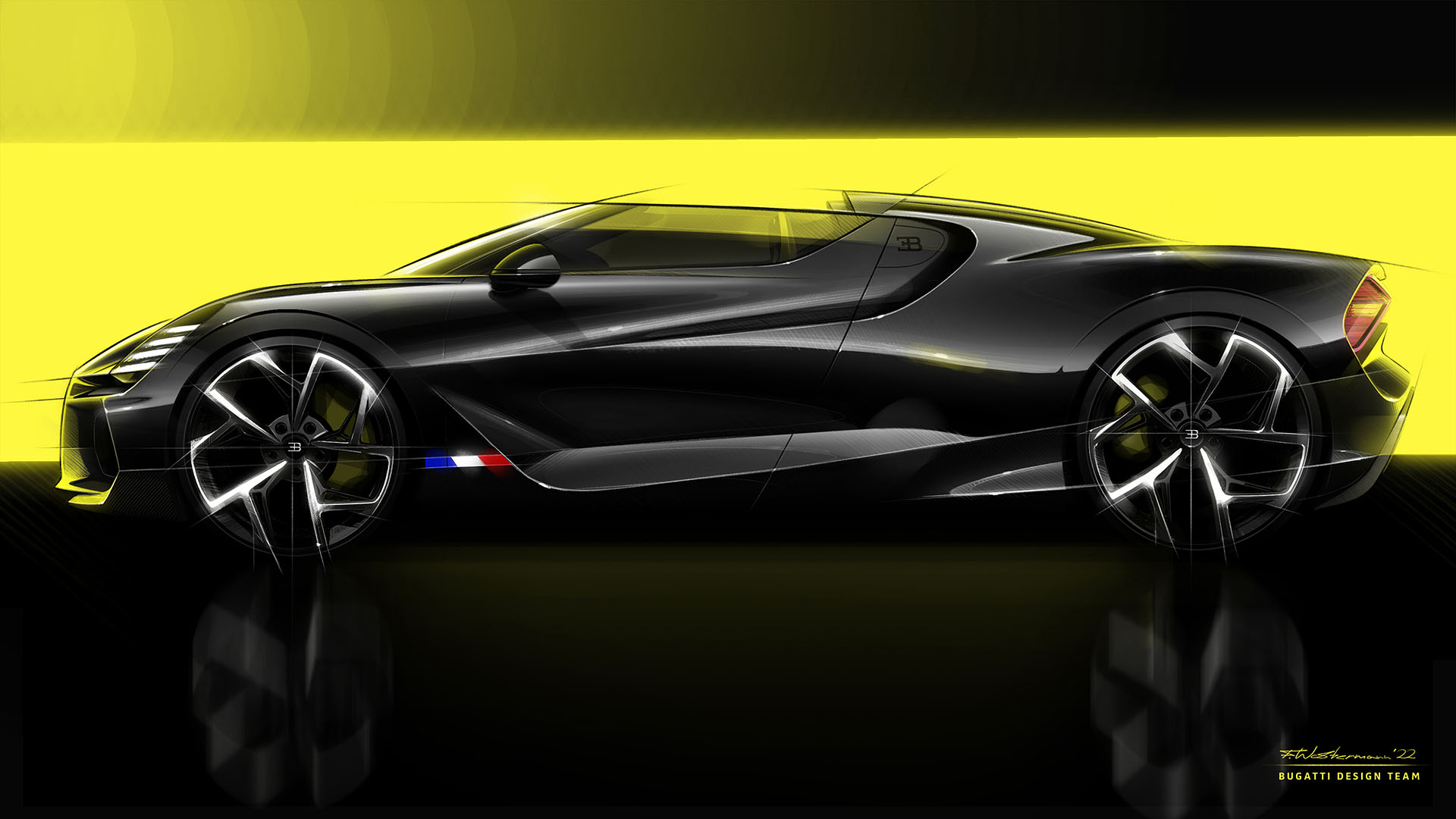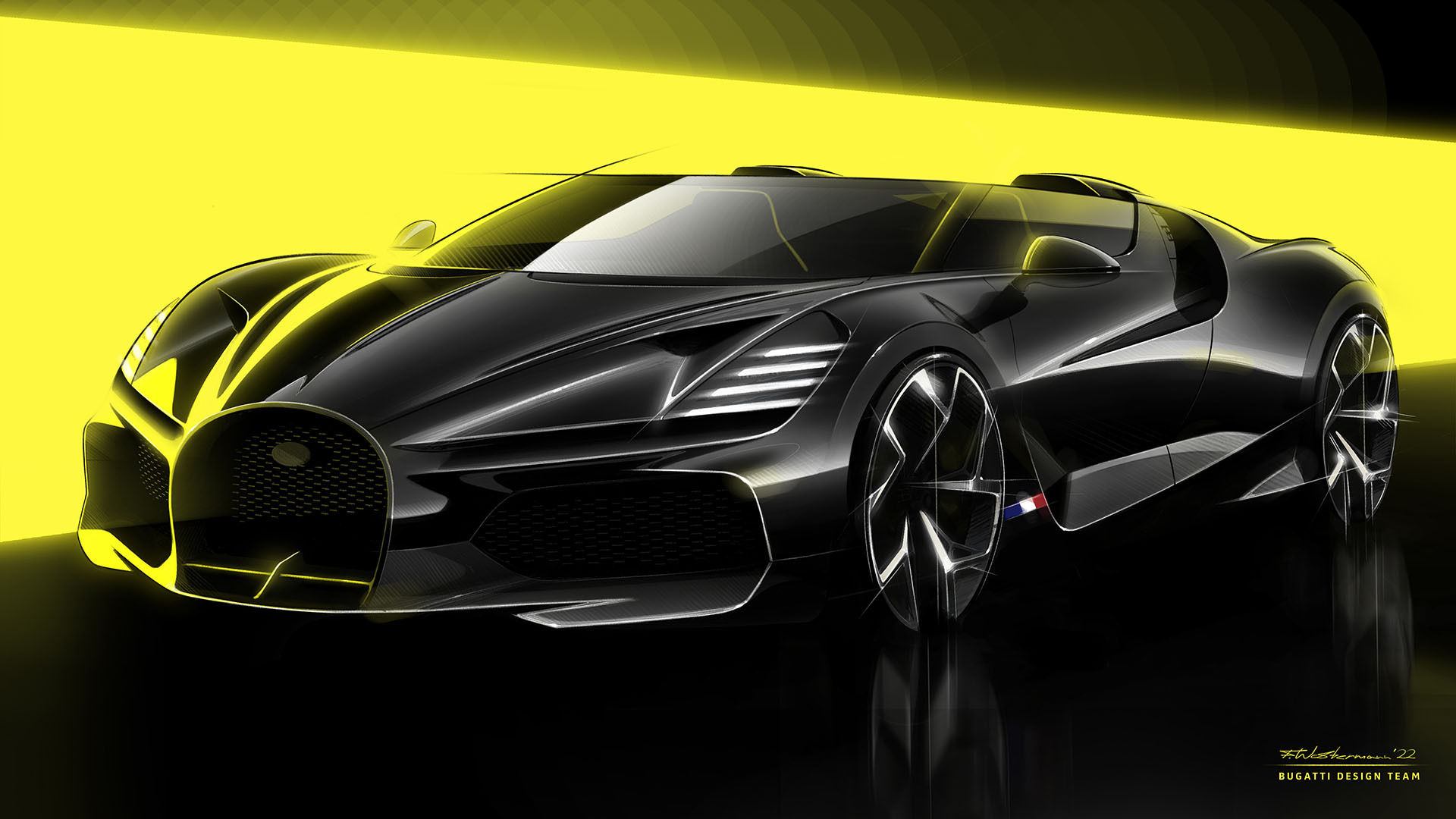When Bugatti unveiled the Veyron back in 2005, they also introduced the magnificent W16 engine with four turbochargers, and by the time the Chiron took over that legacy, the engine remained, but with an increase in horsepower … today we’re looking at 1,600 hp, and while we had the breathtaking Veyron Grand Sport as the convertible version of the original Veyron, during the production of the Chiron, Bugatti never made a real convertible version, sure there was an option to have two glass panels in the roof to give a lighter atmosphere inside the cockpit, but it would be 2022 before we got another open-top Bugatti … and this ultimate roadster is called the Mistral, limited to just 99 units and priced a €5 million … this will be the swansong of the W16 engine before a new model will be introduced as a hybrid.
Mate Rimac, Bugatti Rimac CEO, said: “For the final roadgoing appearance of Bugatti’s legendary W16 engine, we knew we had to create a roadster. Well over 40% of all Bugatti vehicles ever created have been open-top in design, establishing a long lineage of performance icons that – to this day – are revered the world over. In the Chiron* era there had, to-date, been no roadster, so the introduction of W16 Mistral* continues this legacy, driven by enormous demand from our clients for an all-new way to experience the mighty performance of our iconic engine. The W16 Mistral opens the next chapter in the Bugatti roadster story, inspired by over a century of open top legends.”
Bugatti specifically didn’t want to call this car the Chiron Grand Sport or something like that, instead, they took inspiration from the mistral, a mighty wind that blows from the Rhône River valley, through the posh towns of the Côte d’Azur in southern France and into the Mediterranean, and because of the engine is so important for this specific model, they put both together to create the W16 Mistral. In fact, the W16 for the Mistral is taken from the definitive 1,600 PS incarnation of this unit, initially seen in the Chiron Super Sport 300+, the W16 Mistral offers performance as we’ve never seen before in a topless car, hence Bugatti didn’t just cut the roof on a Chiron monocoque, but they effectively re-engineered and reshaped it to create a more rounded silhouette without compromising performance.
Achim Anscheidt, Bugatti Design Director, said: “We know the W16 Mistral will always have significance in the story of Bugatti, marking the last time that perhaps the greatest ever automotive powertrain is used in a roadgoing production car. We, as a design team, felt enormous pressure to deliver styling that immediately conveyed this landmark moment, drawing inspiration from some of the most beautiful roadsters in Bugatti history.”
The new Bugatti W16 Mistral debuts in colors inspired by the Bugatti Type 57 Roadster Grand Raid; a deep black with hints of truffle brown and subtle yellow accents throughout to mimic the livery of that classic Bugatti from the previous century, as an homage to the iconic coachbuilt body, but also to Ettore Bugatti, who chose the black and yellow combination for many of his personal cars, including his Type 41 Royale, to the real enthusiast, this is a timeless visual pairing.
Inspiration for the low windshield also came from the Grand Raid’s V-shaped windscreen, but with a modern interpretation, the curve seems to be wrapping the glass around the A-pillars and just continuing in the side windows without interruption, and while the curve is rather impressive, there is absolutely no distortion for the driver and passenger of this multi-million dollar hypercar, also note the top line of the windscreen and side windows flow purposefully around the side air intakes. This character line then flows back underneath the side glass to shoot through all the way to the front horseshoe grill creating a new three-dimensional character for the famous Bugatti C-line introduced on Chiron. To keep the body side section slim, but also allow for optimum airflow to the W16, the oil cooler intakes on the side were deliberately separated from the engine air intakes, which now sit on the roof, just behind the occupants, the two roof-mounted engine air scoops are a nod to the Type 57 Roadster Grand Raid, as well as the first open-top Bugatti of the modern era: the Veyron 16.4 Grand Sport, tighter, more powerful and appearing to leap forward, W16 Mistral exhibits an entirely different character.
Anscheidt continues: “To reflect the W16 Mistral’s new character, we also totally reinvented its frontal appearance, in line with the vertical layout of our unique or few-off models like Divo and La Voiture Noire. It’s immediately imbued with a sense of exclusivity; the vertically stacked headlights are completely bespoke and the famous horseshoe grille is reimagined to be much more three-dimensional; both deeper and wider. At the rear, we challenged ourselves to create a striking but also more elegant iteration of Bolide’s* X-theme taillight motif, which forever left its mark on the world of automotive design.”
Frank Heyl, Bugatti Deputy Design Director, said: “The headlights themselves are intricately shaped, incorporating a four-light signature that subtly nods to the W16 Mistral’s four-wheel-drive and four turbochargers. But their three-dimensional surface also functions as an aerodynamic aid that funnels air through the light and out through the wheel arch to improve aerodynamic drag. The wider horseshoe grille allows the high-temperature engine radiator to be fully fed purely from one intake, leaving the two side intakes to focus only on providing air to the intercoolers. The X-taillight, meanwhile, serves the function of venting the side oil coolers through ducts connecting the triangular negative space in between the X beams to the side radiators. Therefore, a pressure drop is created between the side intakes and the outlets at the back of the W16 Mistral which helps to manage the mid-temperature cooling circuit of the mighty W16 most effectively.”
The air intakes behind the headrests might have been inspired by Bugatti from the past, but they have been developed from a bespoke carbon fiber structure right from the start to offer impressive rollover protection at the same time, they can effectively support the entire weight of the Bugatti Mistral when she’s upside down, which, let’s hope, never happens to one of the 99 units to be built, with the removal of the roof both the driver and the passenger can really enjoy the symphony of that massive 8-Liter W16 quad-turbo powerplant just inches behind their ears … just imagine the sound of the intake at full throttle, or the blow off valve whistle from the four turbochargers at throttle lift, there is nothing like it in the automotive world today.
The W16 Mistral’s interior goes even beyond the Chiron cockpit, delivering an experience of elegance and luxury at the same time, but combined with near-perfect functionality so the driver has access to all the information he, or she, needs, even when doing 420 km/h, and let’s not forget we’re still looking at the best quality materials available to date, advanced, lightweight titanium, and aluminum components milled from a solid block, or ultra-soft, blemish-free leather hides, and while this might be the final W16 in history, that doesn’t mean Bugatti won’t innovate in terms of design.
We’ve seen a lot of amazing interiors from Bugatti in the past, some customers really ordered some truly bespoke upholsteries and finishes, but for the new W16 Mistral, Bugatti pulled out all the stops with intricate woven leather on newly designed door panels, which has been meticulously tested and produced to Bugatti quality standards with a vision of regular use over a hundred years into the future, and just to makes sure the rest of the interior follows suit, the gear shifter is machined from a solid block of aluminum, but still boasts a touch of wood and an amber insert with Rembrandt Bugatti’s famous ‘dancing elephant’ sculpture locked within.
Back in 2013 the Bugatti Veyron 16.4 Grand Sport Vitesse set the world speed record for a roadster at a staggering 254.04 mph (408.84 km/h), powered by an 8.0-liter quad-turbo W16 with ‘just’ 1,200 PS, today the Bugatti W16 Mistral comes with 1,600 PS, and make no mistake, this is the same power output as used in the Chiron Super Sport 300+ that set the world-record-breaking speed of 304.773 mph in 2019 … it is simple, Bugatti wants to build the fastest roadster in the world, beating their previous record-setter.
Mate Rimac, Bugatti Rimac CEO, said: “The union of a roadster format and our W16 powertrain is absolute perfection. With the roof removed, and a pair of large air intakes directly behind your head feeding around 70,000 liters of air through the engine every minute at full bore, driving the W16 Mistral connects you to the intricate workings of this revolutionary powertrain like no other Bugatti to date. What we also continue with W16 Mistral is a legacy of Bugatti roadsters, each of them incomparable in design, performance and rarity, which stretches right back to the genesis of Bugatti. The Type 40, Type 41 Royale, Type 55 Roadster, Type 57 Roadster Grand Raid that inspired this car, or even the incredible elegance of the Type 57SC Corsica Roadster – Bugatti has always been associated with the purity of open-top driving. So even though the legacy of the roadgoing W16 ends with the W16 Mistral, we continue the legacy of the roadster, first established by Ettore Bugatti more than a century ago.”
Production of the Bugatti W16 Mistral has been limited to just 99 examples for the entire world, with an MSRP of €5 million net, while deliveries of this amazing W16 swansong won’t happen until 2024, there is no need to rush to your local Bugatti dealership … as the entire production is already sold out, this means that for the next two years, Bugatti has secured themselves nearly €500,000,000 in orders already, and we haven’t even seen the Chiron successor yet.
Enjoy some more photos of this new Bugatti W16 Mistral:


